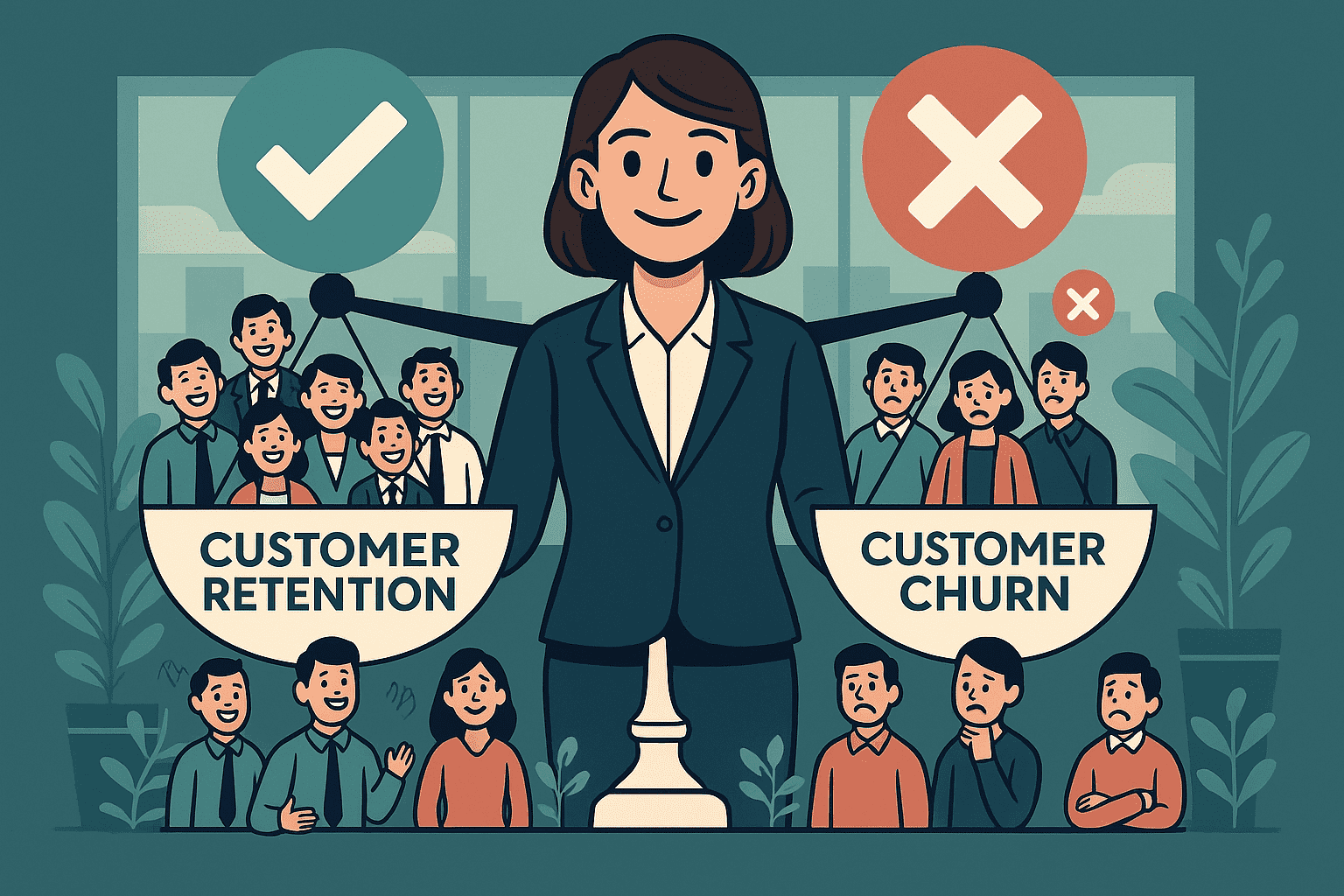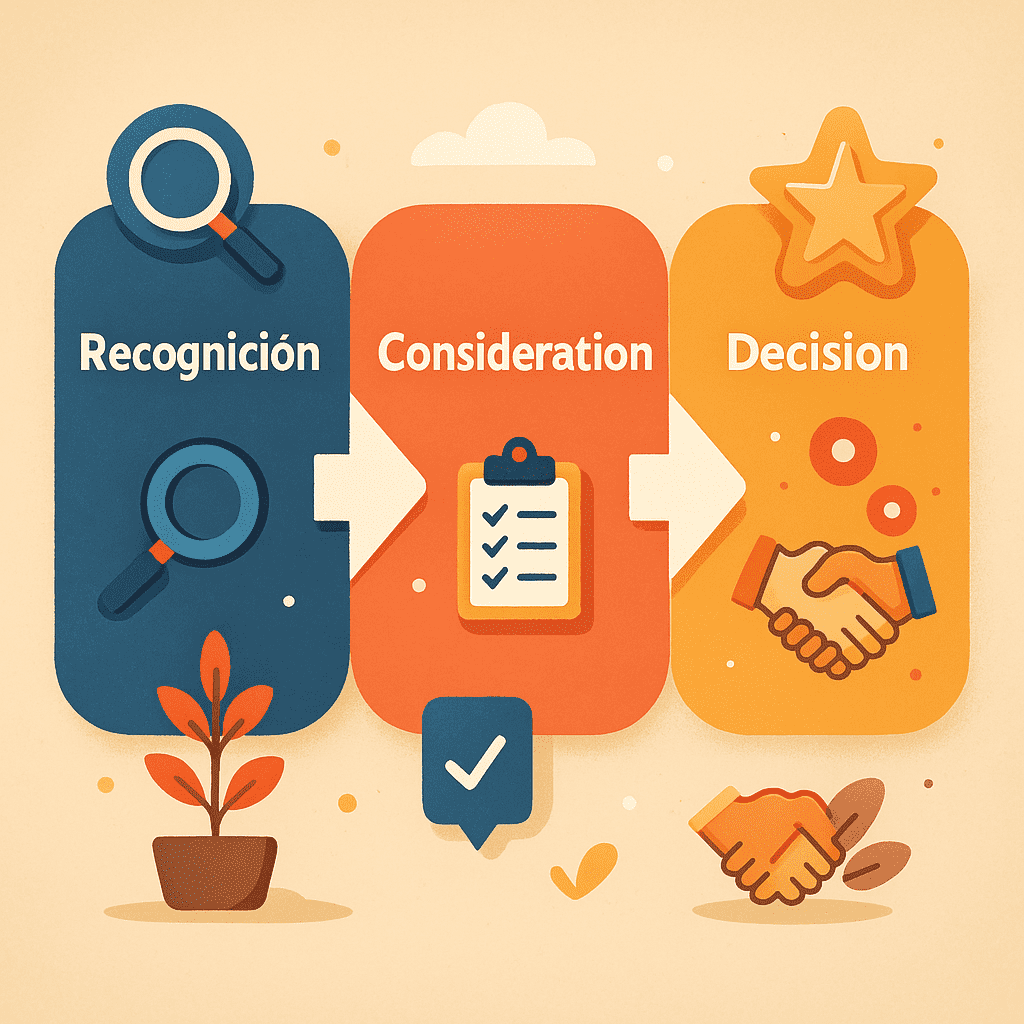
Inbound Sales and How They Impact Churn
Did you know that sales is one of the least trusted professions, alongside politicians and lobbyists? It sounds harsh, but there’s a logical explanation: buyers no longer need to rely on a salesperson to get information. Nowadays, thanks to the Internet, they have all the power in their hands and prefer guides who orient them rather than salespeople who pressure them. This is where the Inbound approach comes into play, turning the sales representative into a customer-focused advisor.
Instead of selling for the sake of selling, the strategy adapts to the customer’s buying process. How does this affect you as a CSM? Why is it important to understand the sales process? I’ll explain it below.
⏩ The Evolution of Sales: From Pressure to Persuasion
Today, buyers no longer tolerate feeling pursued or pressured. This change has led to an approach that puts the customer at the center of everything: the salesperson is no longer the one who talks the most, but the one who listens best.
To adapt to this reality, the salesperson must base their strategy on three pillars:
- Capturing prospects intelligently.
- Demonstrating the real value of their solutions.
- Closing the sale by aligning with the customer’s needs.
But to achieve this, it is essential to understand the buyer’s journey.
🔁 The Buyer’s Journey: Understanding Its Phases
To understand how to connect with your customers, you first need to know their journey:

- Awareness: Identifying the Problem. In this phase, the buyer is becoming aware of a challenge or need. Your role as a salesperson is to understand:
- How do they describe their goals or challenges?
- How do they search for information?
- What problems do they prioritize solving?
- Consideration: Evaluating Solutions. Here, the customer defines what type of solution they are looking for, without yet thinking about specific products or brands. The key questions are:
- What types of solutions do they research?
- How do they evaluate the advantages and disadvantages of each option?
- Decision: Selecting the Best Option. This is the stage where Inbound shines because it’s not just about waiting for the customer to decide. Your mission is to guide them:
- What makes your offer stand out from others?
- Will they need any additional help after the purchase?
- Is it important to offer a trial before the final decision?
By understanding these phases, you can align your sales strategy to provide value at every step of the journey.
💡 Inbound Strategy: Four Stages to Convert Sales into Success

To maximize the chances of success, an effective sales strategy must be based on these four key stages:
-
Identify Potential Customers. Look for customers facing challenges you can solve. Position yourself as a trusted advisor from the first contact, gathering key information about their needs. Actively engage on social media to build your personal brand and generate opportunities.
-
Connect and Build Trust. When connecting with leads, your focus should be on helping them prioritize their goals. Provide personalized advice so they see you as an ally in their success, not just a salesperson.
-
Explore Challenges and Solutions. Ensure that your solution truly fits their needs. Offer specialized consulting to demonstrate how you can effectively help them overcome their challenges.
-
Advise and Validate the Offer. Present your value proposition in a personalized way, highlighting how it will generate a high return on investment (ROI) and long-term benefits.
The Impact of Inbound on Customer Retention
A successful sale doesn’t end when the contract is signed. How you manage your sales can directly influence customer retention and the likelihood of churn (customer loss). Here are some key points to ensure your sales are not just successful but sustainable:
- Avoid Unrealistic Promises: Don’t create expectations that your product or service can’t meet.
- Know the Customer: By understanding their needs, you can ensure your solution truly adds value.
- Educate and Prepare the Customer: Make sure they feel ready to use your product and take full advantage of its features.
- Strategic Upselling and Cross-Selling: Don’t try to sell more without first demonstrating the real value of your solution.
👌 Conclusion: Sales That Build Lasting Relationships
Inbound is not just about selling but about creating genuine and sustainable relationships with your customers. By focusing on their needs and guiding their buying journey, you will not only increase your conversions but also improve customer satisfaction and loyalty.
It is crucial that your sales teams are aligned with your target to avoid high churn at the end of the subscription period for your product.
Don’t be fooled by high initial sales numbers if you’ve just launched a product. Examine customer engagement and product usage, and analyze the potential future churn effect. The first step may be evaluating your buyer persona and their real objectives to adapt your product to the market and actual needs.
And remember, success in sales is not about talking more, but about listening better.